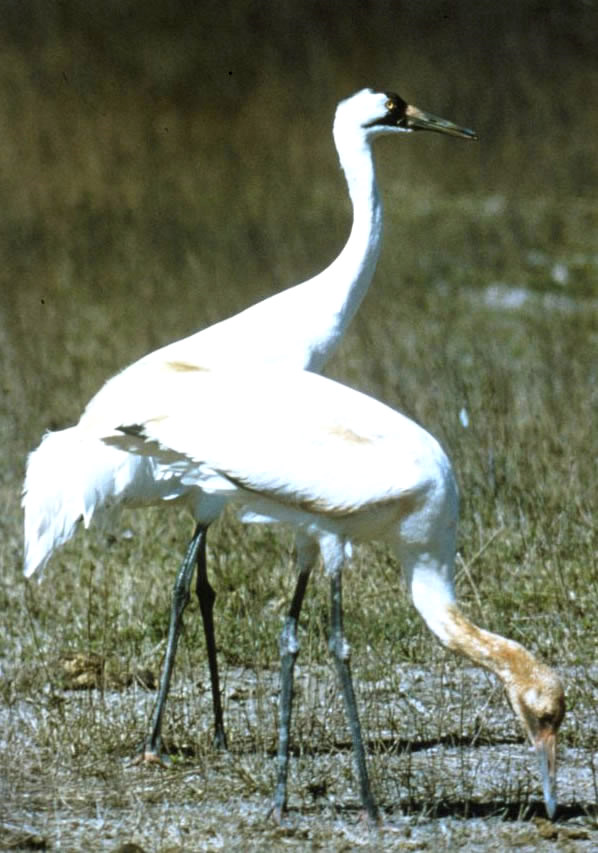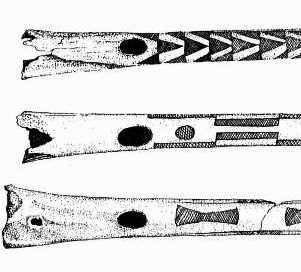Birds
The diverse ecological settings of the Texas coast provide habitat for an assortment of birds, and many varieties were hunted by native peoples. The Anatidae family (ducks, geese, or swans), roseate spoonbill (Platalea ajaja), and whooping crane (Grus americana) inhabit the marshlands of the Gulf coast during the late fall and winter seasons. Woodpeckers, warblers, crows, cardinals, and various other songbirds inhabit the prairies and forests of the interior coastal plain, along with larger birds such as turkey and road runner. Birds of prey, such as hawks, falcons, and ospreys, also reside throughout the coastal area. Remains of all of these species, although each in relatively small amounts, have been recovered from archeological sites in the coastal region.
Poor preservation and small size of many bird bones found in archeological contexts makes species identification and gauging the role of birds in hunter-gatherer diets difficult. Hunting strategies likely depended on the size of the bird. Projectile points found with avian remains in some sites indicate that birds such as ducks and turkeys were hunted with projectile weapons— darts or arrows. Smaller birds likely were netted or trapped.
In addition to meat for protein, birds provided a variety of materials for coastal peoples. Feathers were used for arrows or elaborate headdresses. Ulnas (leg bones) were worked into awls, beads, or whistles. At the Mitchell Ridge cemetery site near Galveston (41GV66) archeologists recovered several intricately incised whooping crane ulnas that had been made in to flutes, or whistles. Two or three holes were drilled along one side of the tubular bone which was plugged at the end with asphaltum in order to produce a desired tone when blown. Dating to the Late Prehistoric period, the whistles likely were played during rituals, such as a burial ceremony. Accounts from De Leó n in the late seventeenth century mention flute playing in connection with warfare among the coastal inhabitants. Bird bone beads made using the groove and snap technique have been found in numerous coastal sites.

|


